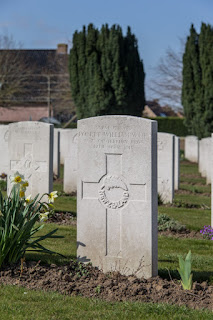On a hillside on the edge of Dunedin's urban area is a long-abandoned farmhouse site. I found it a few days ago on my phone - a rectangle of what looked like a long overgrown hedge, the right colour for pinus radiata or macrocarpa. (Those are the common New Zealand names for what are known in California as the Monterey pine and Monterey cyprus.)
A quick look at my copy of a large 2 inches = 1 mile map from the 1920s confirmed a building site at the end of the road and a fence or wall shown where the rectangle of trees is found. It's a little strange - this particular map usually has names attached to the farms it shows.
A look online at the local Council's webmap showing property boundaries and rights of way gave me a name for the road - Blackwood Road. So perhaps it's Blackwood's farm at the end of it. Council records also gave me a likely address where I can ask for access permission. I went for a look last Tuesday.
Having gained permission - and some advice on road condition, I opened the gate and drove down Blackwood Rd...
...over a creek with a little mud, then up the rutted clay track.
From here I climbed a gate and walked, up a grassy lane between two fences. A ditch on one side looked like it had been dug a long time ago.
 |
| Round Hill, with the Dunedin suburb of Roslyn behind. |
On entering the rectangle of trees I soon saw this. A small platform dug out of the slope of the hill. It was the only artifact I was able to find within the rectangle. A large portion of it is covered with thick gorse so perhaps there's something there.
At the uphill, western end of the rectangle it looked like the trees had grown on the line of an old stone wall which had been gradually brought down by stock.
 |
| Dunedin City from beside the farm site. |
Near the SW corner of the trees, what looks like a collapsed stone wall with ditch beside.
Continuation of the possible wall and trench parallel to the southern line of the rectangle.
I moved back down the hillside on the line of the northern row of trees.
Below the lowest, eastern line of trees I found a continuation of Blackwood Rd. I followed this through younger plantation pine, escorted by local fantails. I'd not remembered that the Council webmap showed this continuation of the road. I followed it through the pines and onto steep pasture, where it petered out.
Back home, I looked online for traces of the Blackwood family. This was one of the first I found, from 1894.
Again courtesy of the local Council's site, I found Adam's grave here. Unlike most of Dunedin's main cemeteries, the Northern has no collection of photos attached to its grave listings. So I went to find Adam's grave, hoping it had a stone and legible inscription. And here it was, "Adam Blackwood, father of above."

















































